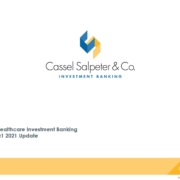How US Defense Spending Has Changed Over the Past 10 Years
We all know that our federal taxes help fund the U.S military, but the ins and outs of this financial relationship and exactly what it all means for the average taxpayer is more esoteric knowledge. To put it very simply: our tax dollars are hard at work, and, to some extent, at war.
How much the U.S. spends on defense fluctuates, but from a big picture spending perspective, we’ve been on a downward slope.
“From a taxpayer’s perspective, the amount of taxpayer dollars that is spent on defense has been generally decreasing for the past 70 years,” said BG Michael J. Meese, USA, Ret., Ph.D, president of The American Armed Forces Mutual Aid Association (AAFMAA). “In 1953, during the Korean War, 69% of federal tax dollars were spent on defense. During Vietnam in 1968, defense represented 46% of federal tax dollars. During the Cold War in the Reagan administration in 1987, 28% of taxes were on defense. In 2010, with a surge of forces in Afghanistan and Iraq, 1 in 5 (20% of) tax dollars were spent on defense. With today’s budget projections — under the budgets of either President Trump or President Biden — taxpayers now have the smallest proportion of federal tax dollars spent on national defense since before World War II (in 1937). Those proportionally smaller federal dollars support American military worldwide with an All-Volunteer Force.”
To get more granular, here’s a look at the Department of Defense’s (DoD) budget each year for the past decade, along with some insights into what was going in the sphere of the military at the time.
Last updated: May 12, 2021
1. 2011
- DoD budget: $687 billion
- Year-over-year difference: -4% or $0.58 billion
The 2011 Budget Control Act (BCA) was signed into law on Aug. 2. A resuscitation of the Gramm-Rudman-Hollings passed in 1985, the (BCA) reinstituted budget caps for defense, amounting in a reduction of some $1 trillion over the next decade.
Read: This Is Where Your Tax Dollars Actually Go
2. 2012
- DoD budget: $645.5 billion
- Year-over-year difference: -6.04% or $41.5 billion
The National Defense Authorization Act for fiscal year 2012 was enacted, which implemented major budgetary reductions. For the first time in over 10 years, the U.S. base and war budget declined.
See: The Most Expensive US Conflicts From 1950-2020
3. 2013
- DoD budget: $577.6 billion
- Year-over-year difference: -10.5% or $67.9 billion
More drastic cuts in baseline military spending occurred under the Obama administration in 2012. These cuts were the most significant in the past decade but progressive economists reasoned that military spending was still untenably high.
Check Out: All You Need To Know About the Economy and Your Money
4. 2014
- DoD budget: $581.4 billion
- Year-over-year difference: +0.66% or $3.8 billion
The U.S’s involvement in the Syrian Civil War kicked off on Sept. 23, when it launched air raids in Syria against ISIS. In this year, Washington deployed 2,000 soldiers to the battle-scarred land.
More: All About the Federal Budget and Its Role in Your Life
5. 2015
- DoD budget: $560.4 billion
- Year-over-year difference: -3.61% or -$21 billion
More troops were sent to fight ISIS in Syria while tension between the U.S. and China heated up. More pleasantly, the Pentagon lifted its ban against women in combat, opening up all jobs to them at long last.
Read: IRS To Send Supplemental Stimulus Payments to 2020 Tax Filers
6. 2016
- DoD budget: $580.3 billion
- Year-over-year difference: +3.55% or $19.9 billion
Donald Trump was elected president of the United States, brewing expectations of significant military buildup and a big boost in spending as anticipated by military members, who largely favored Trump over Clinton.
See: Just How Rich Are Elon Musk, Donald Trump and These Other Big Names?
7. 2017
- DoD budget: $606 billion
- Year-over-year difference: 3.55+% or 19.9 billion
Trump was sworn into office, which triggered the anticipated surge in defense spending. The overseas fight against ISIS intensified. The U.S dropped its largest non-nuclear bomb on an ISIS branch in Afghanistan.
Check Out: National Debt and Deficit — What Is It and How Does It Affect Me?
8. 2018
- DoD budget: $670.6 billion
- Year-over-year difference: +10.66% or $64.6 billion
Space Force, a new military branch devoted to space, launched in 2020. Toward the end of the year Defense Secretary Jim Mattis resigned, ostensibly because of then-President Trump’s orders to remove troops from Syria.
More: Understanding US Productivity and All the Ways It Affects You
9. 2019
- DoD budget: $687.8 billion
- Year-over-year difference: +2.56% or $17.2 billion
Former President Trump became the first U.S. sitting president to step across the military demarcation line between North and South Korea, doing so with North Korean leader Kim Jong Un. Meanwhile, in the states, the president struggled to erect the wall along the U.S.-Mexico border. In merrier news, more black female cadets graduated from the United States Military Academy than ever before.
Read: What Are the World’s Best Tax Havens?
10. 2020
- DoD budget: $712.6 billion
- Year-over-year difference: +3.61% or $24.8 billion
A war with Iran was suspected to be on the horizon when, on Jan. 3, the U.S. killed Major Gen. Qasem Suleimani, the leader of Iran’s Quds Force. Iran then attacked U.S. military bases in Iraq. COVID-19 came and everything was upended, but the military continued to recruit, train and deploy during the pandemic.
See: Here’s What Men and Women in Uniform Earn
11. 2021
- DoD budget: $705.4 billion
- Year-over-year difference: -1.01% or $7.2 billion
Under the Biden administration, the U.S has begun to pull troops out of Afghanistan. Debris from a Chinese rocket plunged through the atmosphere in May, and the military opted not to attempt to shoot it down. As expected, Biden softened the U.S defense budget.
12. What We Can Expect in 2022
So, what does all of this mean going forward in 2022? That’s a hefty question that has much to be determined, but we can already glean some insights into the year ahead, including a bump in the Pentagon’s budget.
“The good news associated with the Pentagon’s 1.6% increase in the 2022 budget of $715 billion versus 2021, is that non-defense domestic discretionary spending will surge 16%, with education spending rising 41%, health and human services 23% and the Environmental Protection Agency 21%,” said Joseph Smith, director of aviation services at the investment banking firm Cassel Salpeter. “Certain taxpayers may feel good about that reallocation towards more needed domestic spending.”
More From GOBankingRates
- Money’s Most Influential: Where Do Americans Get Their Financial Advice?
- Everything You Need To Know About Taxes This Year
- ‘Rich Dad Poor Dad’ Author Robert Kiyosaki: You Should Never Say ‘I Can’t Afford That’
- Here’s How Much You Should Have in Your 401(k) Account, Based on Your Age
Methodology: For this piece, GOBankingRates looked at U.S. Department of Defense budget figures from the office of the Under Secretary of Defense for fiscal years 2001 through 2021. For each year, GOBankingRates found: (1) Department of Defense budget (in billions); (2) Department of Defense budget; (3) year-over-year change in DoD budget; and (4) percent change in year-overyear DoD budget. GOBankingRates also found the (5) total change in DoD budget from 2001 to 2021; as well as (6) percent change in DoD budget from 2001 to 2021. All data was collected on and up to date as of May 3, 2021.
This article originally appeared on GOBankingRates.com: How US Defense Spending Has Changed Over the Past 10 Years




